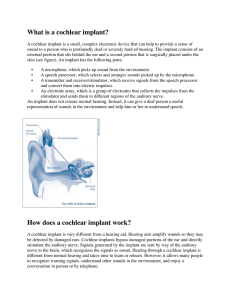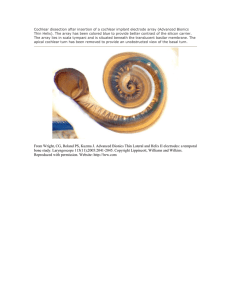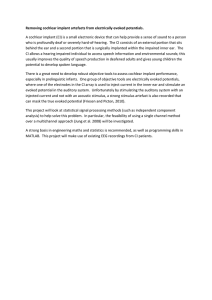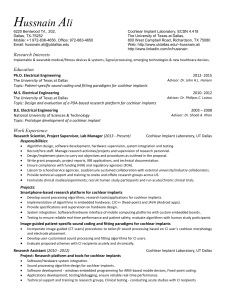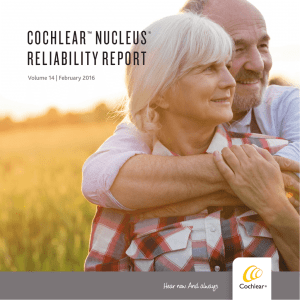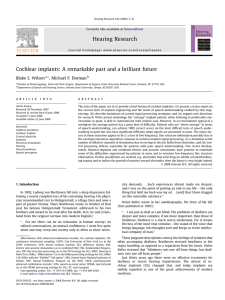Mr Jeremy Lavy, consultant ENT surgeon, gave an interesting talk... including their history. Some of the members who attended... Cochlear implants in adults and Children MembersMeet 10 May 2013
advertisement
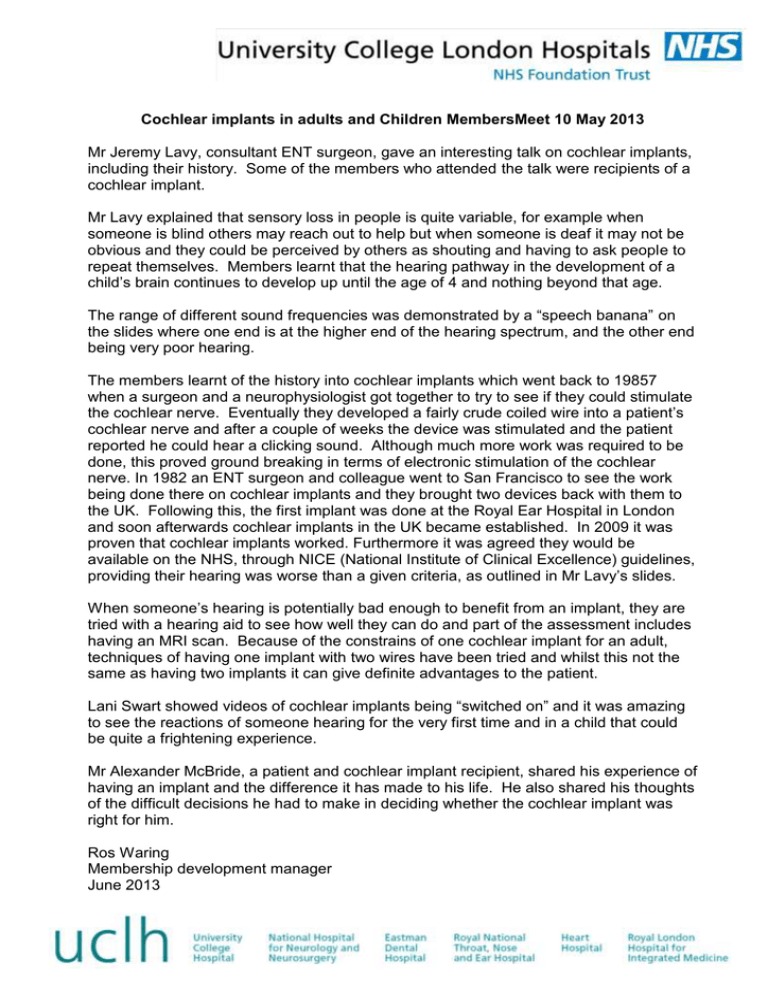
Cochlear implants in adults and Children MembersMeet 10 May 2013 Mr Jeremy Lavy, consultant ENT surgeon, gave an interesting talk on cochlear implants, including their history. Some of the members who attended the talk were recipients of a cochlear implant. Mr Lavy explained that sensory loss in people is quite variable, for example when someone is blind others may reach out to help but when someone is deaf it may not be obvious and they could be perceived by others as shouting and having to ask people to repeat themselves. Members learnt that the hearing pathway in the development of a child’s brain continues to develop up until the age of 4 and nothing beyond that age. The range of different sound frequencies was demonstrated by a “speech banana” on the slides where one end is at the higher end of the hearing spectrum, and the other end being very poor hearing. The members learnt of the history into cochlear implants which went back to 19857 when a surgeon and a neurophysiologist got together to try to see if they could stimulate the cochlear nerve. Eventually they developed a fairly crude coiled wire into a patient’s cochlear nerve and after a couple of weeks the device was stimulated and the patient reported he could hear a clicking sound. Although much more work was required to be done, this proved ground breaking in terms of electronic stimulation of the cochlear nerve. In 1982 an ENT surgeon and colleague went to San Francisco to see the work being done there on cochlear implants and they brought two devices back with them to the UK. Following this, the first implant was done at the Royal Ear Hospital in London and soon afterwards cochlear implants in the UK became established. In 2009 it was proven that cochlear implants worked. Furthermore it was agreed they would be available on the NHS, through NICE (National Institute of Clinical Excellence) guidelines, providing their hearing was worse than a given criteria, as outlined in Mr Lavy’s slides. When someone’s hearing is potentially bad enough to benefit from an implant, they are tried with a hearing aid to see how well they can do and part of the assessment includes having an MRI scan. Because of the constrains of one cochlear implant for an adult, techniques of having one implant with two wires have been tried and whilst this not the same as having two implants it can give definite advantages to the patient. Lani Swart showed videos of cochlear implants being “switched on” and it was amazing to see the reactions of someone hearing for the very first time and in a child that could be quite a frightening experience. Mr Alexander McBride, a patient and cochlear implant recipient, shared his experience of having an implant and the difference it has made to his life. He also shared his thoughts of the difficult decisions he had to make in deciding whether the cochlear implant was right for him. Ros Waring Membership development manager June 2013

